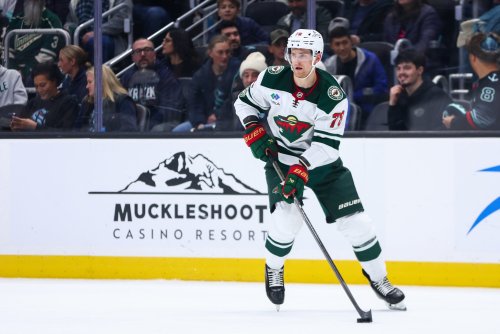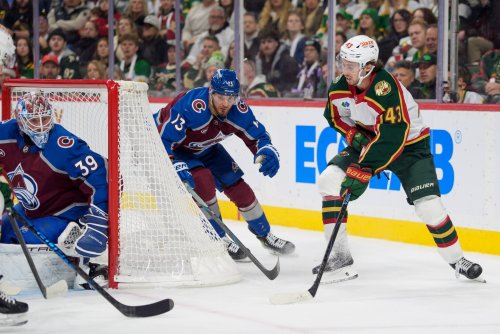
The impact of the COVID-19 pandemic on the NHL will be felt immediately in the form of a flat salary cap, "the bubble" and diminishing hockey-related revenue. The league hasn’t had to deal with the full brunt of whole swaths of players opting out of playing yet. And hockey also hasn’t yet seen the damage, if any, the pandemic has had on prospect development.
Prospect development just got thrown another curveball as the NCAA announced Thursday that it was delaying the start of the hockey season.
The college hockey season was canceled back on March 12th, with the last games being played on March 7th. A delay until December means that games will have been halted for 280 days. While there is some speculation that the delay may only push the season into November or December, the college hockey season has only a coupe weeks around the holidays that can allow for missed time to be made up.
Canadian junior leagues like the Western Hockey League and the Ontario Hockey League, have delayed their starts until December. The AHL has set a tentative date of Dec. 4th to begin playing again. All of these delays mean players of the future will miss out on valuable development.
It presents issues with what to do with a team's prospects. Do the teams sign some of them to bring them under their control sooner? Even without considering the salary cap hell a good portion of the league is facing, the NHL Collective Bargaining Agreement only allows a team to have a maximum of 50 contracts signed. That includes players on an entry-level deals. Teams like the New York Islanders are sitting at the maximum, for example, so there isn't room to sign players early.
What's the incentive to sign prospects at this point? Teams who would otherwise be signing college players after the completion of their sophomore or junior seasons might be willing to push their players to get back for another year. That makes sense. A unique season calls for otherwise unique handling of players. Furthermore, this scenario could lead to drafted college players flooding the free agent market.
The NHL CBA allows for teams to hold rights to drafted players up until August 15th, following that player's graduation from college, meaning after August 15th that player becomes a free agent and is free to sign with any team. This isn't uncommon. The Wild signed Sam Anas, Mitchell Chaffee and Christian Folin through this process. But if a large number of teams choose to punt on this season and make players play their senior year, there is potential for an even greater number of college free agents exercising their right to sign wherever they please.
For the Minnesota Wild and their eight prospects currently playing in the NCAA missing conference tournaments, the national tournament and now a delayed season cannot be considered ideal. Some of the team's Canadian Junior players have already started looking to Europe for an outlet. Alexander Khovanov signed with Ak Bars. Vanya Lodnia and Brennan Menell have opted for the Minsk Dinamo.
However, prospects eyeing Russia and Euro leagues need to find a team that’s willing to give them the playing time. Khovanov, the Wild prospect that scored 99 points with Moncton, has only played in one game out of the four games for Ak Bars. Speaking of playing time, in the one game he played, he saw just over five minutes of ice time. That’s not enough time for the NHL hopeful to learn what he can and cannot do against a more mature opponent as the KHL is an adult league.
Lodnia is in the same boat, albeit a different team. He has appeared in one game out of the four for the Minsk Dinamo. He had even less time on ice -- just cracking three minutes of time on ice. In fact, the only prospect that has begun playing in the KHL with regularity is Menell. A Woodbury, Minn. native, Menell didn’t exactly go over to Belarus under the direction of the Wild.
Replies to a tweet by Michael Russo reporting the news of Menell heading to the KHL seems to indicate that his signing was likely not team sanctioned. That being said, Menell has jumped in and shone brightest of the Wild prospects. He leads all defensemen with five points (5 assists) in three games played while logging an average of 23 minutes per game.
The pandemic hasn’t been forgiving for players seeking options. For clubs like the Wild, not knowing what this crazy, unique season of hockey will do for their future players is a tough sea to navigate.
In the short term, college players must wait for more information from their respective conferences. The only game prospects are playing is the waiting game.
Think you could write a story like this? Hockey Wilderness wants you to develop your voice, find an audience, and we'll pay you to do it. Just fill out this form.









Recommended Comments
There are no comments to display.
Join the conversation
You can post now and register later. If you have an account, sign in now to post with your account.
Note: Your post will require moderator approval before it will be visible.